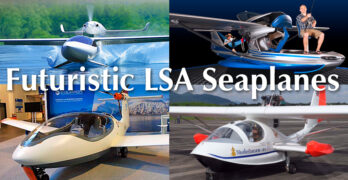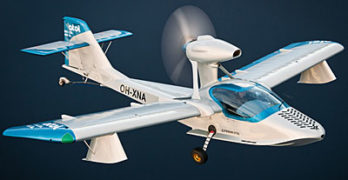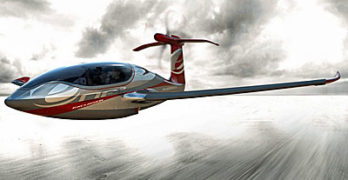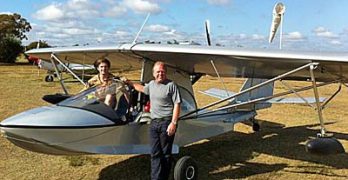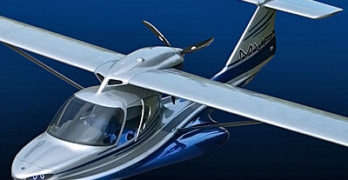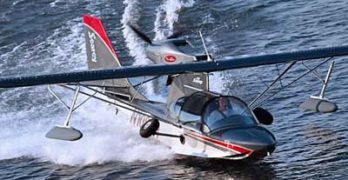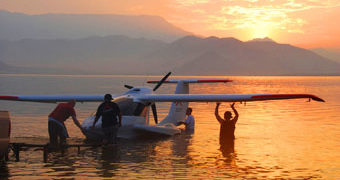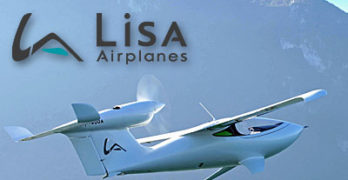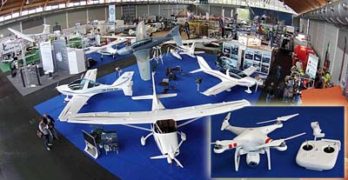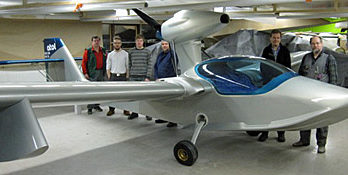UPDATE 11/28/21 — Vickers Aircraft sent fresh images and additional comments. See ••• below. —DJ
Excitement is in the air, even as the season wraps up activity here in the USA. Remember, while winter approaches for Americans, summer is coming to New Zealand.
That might explain an information deficit of late from LSA seaplane developer, Vickers Aircraft. People have been asking questions and reports have become infrequent. Uh, oh…!
Fortunately, the quiet period appears to have a good explanation.
Received November 24th, 2021 — “Hi Dan. Sorry (for a delayed response),” wrote Paul Vickers. “We are pushing very hard for a 10 December first flight. We are structurally testing the wing today.”
Often called a “strongback,” Paul refers to the I-beam steel testing jig seen in the nearby photo. “This was custom designed and manufactured by our Wave team,” he added proudly.
••• “Wave is not just another LSA,” clarified Paul in follow-up email.
Search Results for : ATOL
Not finding exactly what you expected? Try our advanced search option.
Select a manufacturer to go straight to all our content about that manufacturer.
Select an aircraft model to go straight to all our content about that model.
Light-Sport Aircraft Seaplane Drama; One Up, One Down, Both Continuing
In the fascinating LSA seaplane sector-within-a-sector, we find both good news and bad news today, though the latter can be overcome. That’s the shortest possible story. More detail follows.
The Good
“It is with great pleasure we can report that Equator Aircraft Norway achieved first fully balanced flight with the P2 Xcursion prototype aircraft over the newly painted runway 22 at Eggemoen Technology Park in Norway,” reported the company. Here’s our earlier report on this fascinating project.
Tested by Eskil Amdal, Equator reportedly accelerated to 70 knots before leaving the ground and flying down the runway at 100 knots at nine meters (about 30 feet, at the edge of ground effect), before landing smoothly. Amdal reported stable flight with good controllability in all axes. Two more flights were performed the following day, further establishing confidence in the flying characteristics.
“The aircraft is a prototype developed by Equator with very limited means since 2010,” explained the company.
Sleek, Sexy Electric Light-Sport Seaplane
AirMax SeaMax — Icon A5 — Vickers Wave — MVP — Lisa Akoya… you only need look at the best promoted brands to see that arguably the most innovative ideas in light aircraft are coming from the LSA seaplane sector. Each of these is a great example of visionary engineering.
Others LSA or light kit seaplane developments — Searey, Mermaid, ATOL Avion, Aero Adventure, among others — are somewhat more conventional but that’s reassuring to some potential buyers. All these names have one enormous advantage. They have practical field experience. Of the five in the first paragraph, only SeaMax has a longer period of use by owners in regular operation.
Now consider Equator Aircraft P2 Xcursion, an electric hybrid seaplane with several compelling ideas. I wrote about this in an article two years ago; now we have an update.
Light-Sport Aircraft … Going the Distance
Among the critiques some old school pilots employ when trying to marginalize Light-Sport Aircraft is that these aircraft are not suited to flying long distances. I’ve reported several around the world flights (check this article and here’s another) but that’s hardly all the long flights.
The invitation started out, “Join all of us at Progressive Aerodyne and the City of Tavares on Friday, September 11 for a presentation by Michael Smith about his epic Searey flight from Melbourne, Australia to Central Florida. Michael will give a presentation at the beautiful Tavares Pavilion on the Lake about his incredible journey.” Unfortunately, I can’t attend as I’ll be working the Midwest LSA Expo in Mt. Vernon, Illinois that weekend. However, many readers probably cannot attend either so here’s a bit of Michael’s story.
In the not-too-distant past, documenting a trip like his probably meant appealing to a magazine or publishing a book.
MVP Traveling to Europe and Touring USA
In the first decade of Light-Sport Aircraft we saw a new model emerge nearly every month; some months brought more than one model. SLSA approvals reached 136 aircraft, most of them land-based aircraft (our SLSA list describes each type).
To general aviation pilots used to a genuinely new aircraft model once a decade or so, this LSA development outpouring was phenomenal. Cirrus SR20 was certified 17 years ago in 1998; how many other all-new GA models can you name since?
By 2015, the torrid pace has slowed for various reasons and now we see more incremental changes on Light-Sport Aircraft, by which I mean new engines, interior changes, new avionics or other features, and so forth. This is much like in the GA world and I see nothing wrong with that, but it is less inspiring than a constant flow of brand-new concepts.
Rushing into this all-new-design gap like a tsunami filling a Pacific atoll are LSA seaplanes.
Searey Announces Financing … Riding the Wave
While some beautiful looking LSA seaplanes have captured lots of attention — here I am thinking of Icon’s vigorously promoted A5, the unusually capable MVP, the highly innovative Wave, and Finland’s ATOL … all of which have some fascinating features — all but one of these share one feature: you can’t get one yet. ATOL is preparing to deliver but A5, MVP, and Wave are all still works in progress. It takes time to develop a new aircraft but today if you want a ready-to-fly seaplane in the USA, you have basically three choices: SeaMax, Super Petrel LS, and Searey. Of those, Super Petrel has airplanes in stock in the USA and ready for delivery.
Searey stands along in my view as an LSA seaplane you can buy today and receive in a reasonable timeframe.
It’s Winter, So Seaplanes Are Flying … Uh, What?
On this website, we zoom around the world following Light-Sport Aircraft, from near the Arctic Circle — you know, where Santa and the wee elves are pulling some heavy overtime about now — to the warm balminess of Southern California. I know of what I write, having once lived in the snow belt and now hanging with the family in Palm Springs, California for Christmas. It seems everywhere I look I see LSA seaplanes in sea trials and this is happening in the dead of winter.
Why be surprised? Perhaps you’ve noticed boat shows happen in the winter months. When living in Minnesota, I was always amazed that boat shows were held in January and February, a time of year when it would be months before the ice melted from the state’s 10,000 lakes to allow use of those boats. Yet this is when people were shopping, I suppose anticipating an upcoming season of boating fun.
Amazing LSA Seaplanes: Lisa’s Supersleek Akoya
We just passed September 1st and that date is significant in the LSA universe. It is the day, ten years ago, that the Sport Pilot & Light-Sport Aircraft rule we have been celebrating all summer officially became part of the Federal Aviation Regulations (FARs). If you’re thinking, “Hey, I thought it was announced in the summertime, at AirVenture!” … you’re correct. It was, but that was just the administrator’s public relations timing to get the biggest bang for the buck, at Oshkosh. As we continue the tenth anniversary celebration — looking back on the first decade — we see the astounding development of 136 models of LSA, more than one every month for ten years running. This profusion of models runs the length and breadth of aviation, from fixed wing, three axis airplanes to powered parachutes to trikes to motorgliders and from less than $30,000 to over $200,000. I fully expect designers to continue pushing the envelope in every direction but one facet of LSA development seems as energized as a Saturn V moon rocket: LSA seaplanes.
Flying through the Great Halls of Aero 2014
Aero 2014 is history now but sorting through all the discoveries and reviewing hundreds of photos I shot will consume more time. Just to give a flavor of the diversity in the halls, I present some images below with photo captions. As time allows I will provide several articles about aircraft and concepts contained in the great halls of Aero. One topic I will not cover is the large number of radio control or other model airplanes I saw. In some years, such can take an entire gymnasium-sized hall by themselves … fascinating! Yet the image you see nearby is a shot taken by a small quad copter (photo inset) with its wide angle lens. Such tiny flying machines are surely part of our future and seeing things below is part of their mission (for better or worse). My LAMA Europe associate and friend, Jan Fridrich, asked a vendor to shoot the image you see, which would not have been possible by any means other than a hydraulic lift.
LSA Seaplanes Remain Newsworthy in 2014
Someone remarked to me recently that LSA seaplanes seem to be the topic of the week or month (or however often you check in to see). Indeed, as we approach the tenth anniversary of Sport Pilot / Light-Sport Aircraft, we can reflect with pride upon more than 130 models making their way to market. True, not all have proven successes in the market place but having choice is always good for customers even if they finally select from a limited number of brands to occupy their hangar. Therefore, thanks to all those entrepreneurial designers that brought new airplanes to the sky. Now, in the closing months of LSA’s first decade, a new focus appears turned to amphibious Light-Sport machines, with more than 20 vying for our attention. As always some are doing a better job of capturing mindshare than others. In this article I’ll talk about two from nearly opposite ends of the new spectrum.


